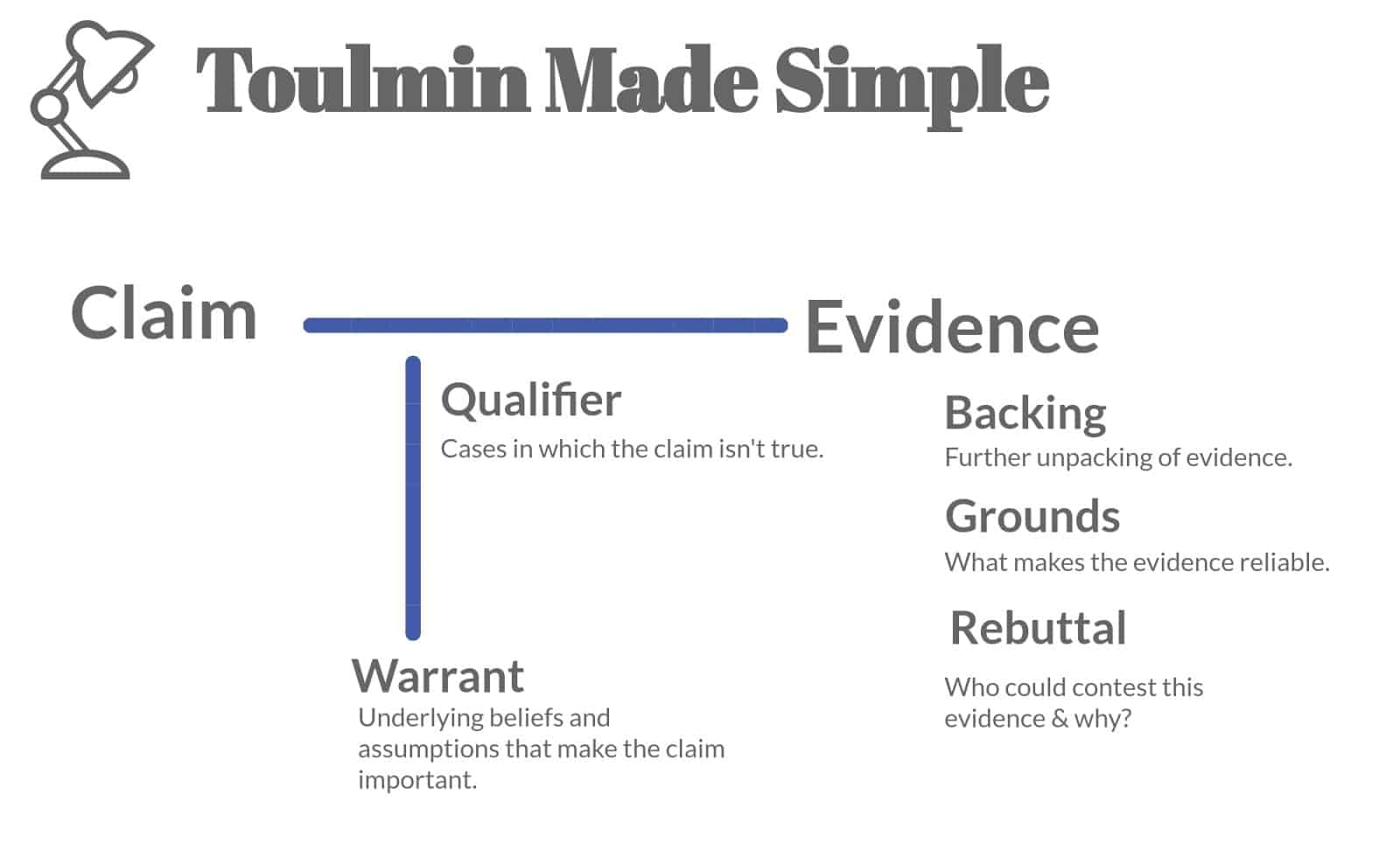Building strong argumentation is one of the most highly-required skills in modern education. Top world universities make their decisions on admission based on the quality of motivation letters. If you are planning to enroll in Cambridge or Oxford, you should primarily master your writing skills to impress the commission with your motivation. Unless you want to buy essay online cheap, the Toulmin method could make a competitive advantage and teach you how to build strong arguments. Let’s study it in detail.
The Essence of the Toulmin Method
British philosopher of the 20th century Stephen Toulmin once noticed that quality arguments usually contain six parts. He used the following terms for their descriptions:
- Grounds: facts or evidence used to support an argument;
- Claim: the proven statement or thesis;
- Warrant: hypothetical logical statements that usually serve to link the claim and facts;
- Qualifier: statements that limit the strength of an argument or establish the conditions under which the argument is true;
- Rebuttal: counterarguments that indicate circumstances in which the main argument is not true;
- Backing: statements that serve to support clarifications (i.e. arguments that not necessarily prove the main point, but which reinforce the truth of the clarifications).
The Toulmin model reminds us that arguments are more often presented with clarifications and rebuttals than accepted as absolute. This allows the reader to understand how to build reasoning and in what conditions it can be true.
The Structure of Motivation Letter According to the Toulmin Method
The idea of any motivation is to express the reasons why they should be considered as the best candidate for a certain position. However, to qualify for Cambridge or Oxford, it is important to show that you can approach any task, think critically, and give your own arguments for or against. In fact, the quality of arguments determines the impact on the reader. Therefore, the Toulmin model is suitable for building strong arguments for motivation letters. We can build your letter as follows:
1. Introduction
- A “hook” to attract the reader’s attention;
- Introduction to reasoning;
- Giving your statement or thesis, which is likely to be clarified with several arguments.
2. Presentation of supporting grounds (reasons or evidence)
- The first fact;
- The second fact (and so on).
3. Presentation of the warrants that show how data is logically related
- The first warrant;
- The second warrant.
4. Support of the reasoning with backing to demonstrate that it is good both in theory and in practice.
5. Discussion of counterarguments and their rebuttal (optional)
- The first counterargument;
- Rebuttal of the counterargument;
- The second counterargument;
- Rebuttal of the counterargument, and so on.
6. Conclusion, summarizing the above-mentioned ideas
The motivation letter written in this way will definitely show your ability to broadly express your minds, persuade your reader, and talk about your strengths. No argument should seem stronger than it is in real life. The point is not to “overcome” all counterarguments, but to get as close as possible to the truth or the right decision.
Conclusion
Nowadays, learning how to write a brilliant motivation letter becomes increasingly important for university applicants. This task, in addition to increasing literacy, requires the development of proper competencies. Such competencies include the ability to logically build text structure and provide strong argumentation.
It has been proved many times that the Toulmin method is an excellent way of proper argumentation, which makes student’s motivation letters persuasive and strong. Therefore, if you plan to study at top-level universities of the world — start your preparation from mastering your writing skills and you will definitely succeed.

